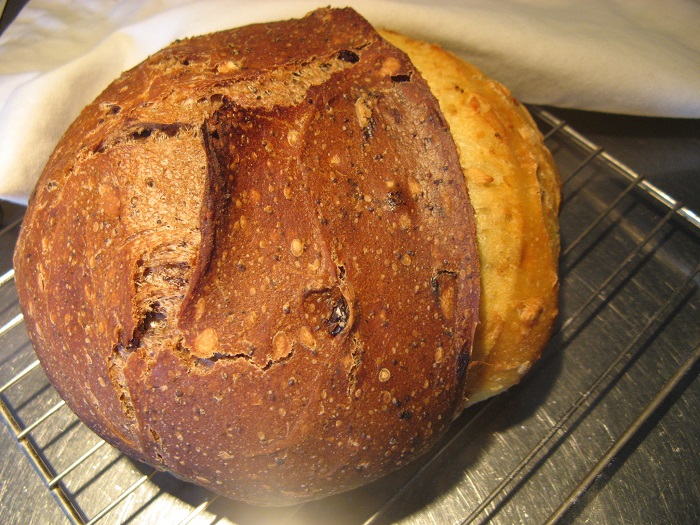Well, you know me - I can't resist a challenge! And thanks so much to @Mini Oven for issuing this one. I had more fun with this than I've had in a long time. :)
Here in Victoria (BC, Canada) we're not quite on the path of totality for the eclipse but will have the best view in Canada (about 90% totality). That's assuming clear skies, of course.
I started out thinking, as others have, of making two doughs, one dark and one light. So I went back to my flour test sourdough recipe, where I tested a variety of flours by using each as 25% of the total flour weight. This was the basis. The 'sun' dough is 25% corn flour, with added sunflower (well, duh!) and sesame seeds. The 'moon' dough is 25% teff flour. I wanted it a little darker so added a little bit of very dark toasted malt flour and a touch of Ghirardelli cocoa. Then just for fun I added currants and poppy seeds.


Oh, and just because I'm a total idiot, I decided to make not one, but nine loaves, in the same timeframe as prepping and baking all the bread for tomorrow's shop and market. And to advertise it for sale without ever having tested a loaf first. At least there are nine, so I can cut one (later when they cool) and make sure it's at least edible first). :)

I wanted to show the 90% eclipse, so placed the 'moon' on top of the 'sun'. That worked fairly well...


... except that they are both fairly soft doughs and the shape very quickly spread, placed as it was on parchment on a baking sheet. So, new solution (I'm making this up as I go along, right?) - put the whole construct in a parchment-lined basket. I didn't want to turn it out of the basket once risen, so I figured I could lift the whole thing out with the parchment once it was ready to bake.

And taa-daa! It worked! Here are eight of them loaded into pre-heated cast iron pots.

Just right! I did try to score the 'sun', but the dough was too soft.

I was a bit nervous for the first 30 minutes until I could take off the lids and see what had happened. Hmmmm, looks okay so far! Finish baking with the lid off, then turn them all out.

I'm glad the colours stayed nicely contrasting. Sometimes the bake darkens things to the point where the colour is lost. The loaves look a little bit like a snail devouring a rock, or maybe a bunch of baseball caps, but you get my drift, right? I'll cut one later and post the results (crumb and taste).


And there you have it - Eclipse 2017 Bread! Oh, and here are a couple of the other breads I baked today for sale tomorrow - Oat, Walnut and Seed Levain and an Orange Coriander 100% rye sourdough.

Edited - here's the crumb shot! Texture is a nice moist, chewy sourdough, and the taste is good. Slight salted chocolate taste on the 'dark side'. :)

Nice sun spots and moon craters!
